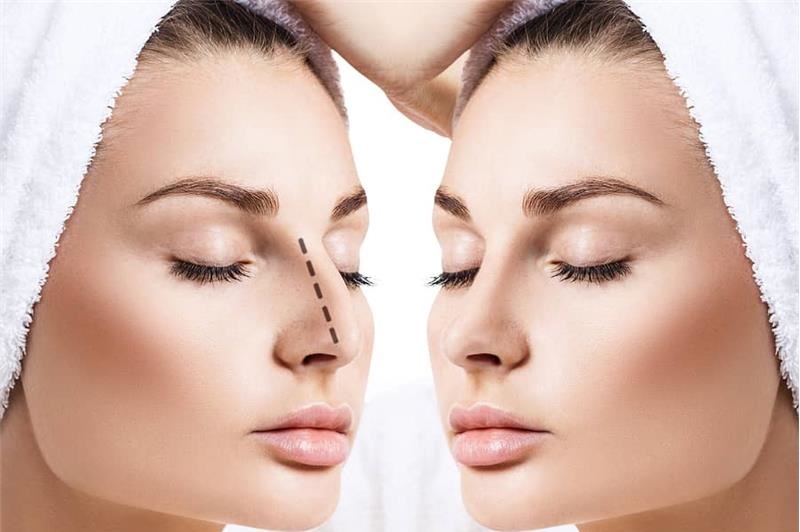
We Answered All Your Questions About Rhinoplasty
While searching on Google, I came across the question, “I'm going to have rhinoplasty; what should my nose look like?” I couldn't help but feel surprised. Rhinoplasty is a cosmetic surgery, and if someone is dissatisfied with the shape of their nose, they can request this surgery anytime. The most common reasons for seeking rhinoplasty include having a dorsal hump on the nose, a crooked nose shape, a thick or droopy nasal tip, or a nose that appears disproportionately large compared to other facial features. Breathing issues and complaints such as snoring often accompany the reasons for rhinoplasty. Along with aesthetic concerns, issues such as bones or tissue inside the nose causing breathing difficulties should also be resolved during the procedure.
You cannot immediately undergo rhinoplasty the moment you decide to do so. During puberty, individuals often become dissatisfied with their nose shape, as this is when nasal structures, like the rest of the body, begin to grow rapidly. If you visit my clinic at the age of 16 seeking rhinoplasty, I would advise you to wait until you turn 18. It is medically impossible to undergo rhinoplasty at the age of 14. By 18, the nose's growth is complete, and it reaches its final shape, which is why rhinoplasty is not performed before this age.
Aside from congenital nasal deformities, trauma can also alter the shape of the nose. If you've experienced a nasal fracture, you should consult a doctor immediately to treat the break. However, despite fracture treatment, the nose may still appear deformed. A minimum of six months must pass after fracture treatment before undergoing rhinoplasty. This allows the swelling caused by the fracture to subside, and rhinoplasty can be safely performed.
Rhinoplasty can be performed by both plastic surgeons and otolaryngologists (ENT specialists). However, plastic surgeons, who are extensively trained in facial aesthetics and proportions, are considered more skilled in rhinoplasty procedures and are the preferred choice.
If you're unhappy with the shape of your nose and choose to undergo surgery with a plastic surgeon, you might wonder whether the procedure should be done in colder or warmer weather—winter or summer. In our country, there is a common belief that this surgery is more comfortable in winter, and this belief is partly justified. However, you can also undergo rhinoplasty in summer. The only precaution is to avoid exposing post-surgical bruises to the sun during the first week, which may require resting at home. Additionally, you will need a large-brimmed hat since sunglasses cannot be worn for three months after rhinoplasty. Regular glasses and sunglasses are prohibited during this time, and the use of contact lenses is recommended.
Rhinoplasty is performed under general anesthesia (being put to sleep) and is no longer done under local anesthesia. Significant advancements have been made in nasal aesthetic surgery over the years, with Turkish plastic surgeons leading many of these innovations. As techniques have developed, the number of nasal units requiring correction has increased, resulting in longer surgery times. General anesthesia allows for better control of the patient's blood pressure, reducing swelling and bruising on the face, and enables more precise and detailed work.
You must stop eating and drinking at least six hours before your scheduled rhinoplasty time. Comprehensive laboratory tests and anesthesia evaluations will be conducted, requiring you to fast for six hours. If you have medical conditions such as heart disease, hypertension, or diabetes, you must inform both your anesthesiologist and plastic surgeon before surgery.
Rhinoplasty is not performed during pregnancy to protect the baby's health unless absolutely necessary. Breastfeeding mothers should also postpone the surgery or avoid feeding their babies with breast milk expressed on the day of the operation. Milk expressed on the day of surgery should be discarded, as it may contain anesthesia-related substances.
Women who are menstruating can still undergo rhinoplasty, but I do not recommend taking hormone-based medications to delay menstruation.
Before rhinoplasty, you must stop taking blood-thinning medications, supplements, herbal teas, and vitamins. There is no need to stop antidepressants before rhinoplasty, but this should still be communicated to your anesthesiologist and doctor.
Rhinoplasty can be performed using either the open or closed technique. There are currently no definitive advantages of one technique over the other in medical literature. In the open technique, a small additional incision (about 4mm) is made on the columella (the area between the nostrils). There is no incision on the upper lip in either the open or closed technique. After surgery, patients may feel that their upper lip has changed, but the actual change is in the nasal tip, which enhances the appearance of the upper lip.
The recovery process after rhinoplasty takes at least two weeks. Swelling and bruising around the eyes are normal during the first week. To reduce swelling and bruising, ice packs are recommended during the first 24 hours after surgery. Postoperative nasal care includes using isotonic sprays to clean the inside of the nose and avoiding any trauma to the nose for the first 10 days. Swelling and bruising gradually subside over time.
Thicker-skinned patients may need to wait longer—up to a year—for the swelling to subside and the nose to take its final shape. Second or revision surgeries, if necessary, should not be performed before a year has passed.
Smoking should be avoided after rhinoplasty as it delays healing and increases pain. Post-surgery, patients should consume protein-rich foods and rest for at least 10 days.
The nose is the most important feature of the face, representing your character in the midface. Over time, the nasal tip may droop, making it appear larger compared to other facial features. Rhinoplasty for individuals over 40 can significantly contribute to facial rejuvenation, making the person appear younger.